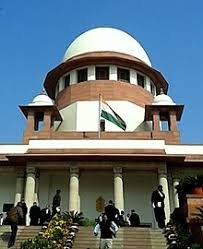The case originated from a Writ Petition (C) No. 1022 of 1989, filed by the All India Judges Association.
The primary issues include the restoration of the 10% quota reserved for Limited Departmental Competitive Examination (LDCE) for promotion to Higher Judicial Service to 25%, as previously determined by the Supreme Court in the All India Judges’ Association v. Union of India case (2002). This quota was reduced to 10% through directions issued in 2010 in a previous writ petition.
Other key issues include determining the minimum qualifying experience required for appearing in departmental examinations, and whether a suitability test should be introduced for promoting Civil Judge (Senior Division) to District Judges against the existing 65% quota.
The judgment also addresses whether the requirement of having minimum three years’ practice for appearing in the Civil Judge (Junior Division) examination, which was removed by a previous court case, needs to be restored.
Law Involved
Recruitment and promotion rules within the Higher Judicial Service and Civil Judicial Services.
The recommendations of the Shetty Commission, which suggested specific percentages for promotion and direct recruitment to the Higher Judicial Service. The Commission recommended that 50% of total posts be filled by promotion on the basis of merit-cum-seniority, and 25% by direct recruitment from eligible advocates.
The interpretation and application of previous Supreme Court judgments, particularly the “First AIJA Case” (1992) and “Third AIJA Case” (2002), which established the recruitment ratio and experience requirements for the judiciary. The Third AIJA Case endorsed a 75% promotion and 25% direct recruitment ratio for the Higher Judicial Service, with 25% for LDCE.
The All India Bar Examination (AIBE) and its relevance to provisional enrolment and registration dates for lawyers seeking to enter the judiciary.
Reasoning.
LDCE Quota Restoration (10% to 25%):
The Court observed that reducing the LDCE quota to 10% from 25% was based on a writ petition in 2010 which aimed to fully utilise LDCE vacancies. However, some States (like West Bengal) continued to have unfilled LDCE posts.
Many States, including Kerala, Manipur, Madras, and Uttarakhand, recommended restoring the 10% quota for LDCE to 25%23. This restoration is seen as an incentive for meritorious officers and aligns with previous judgments, allowing for accelerated promotion.
The Court found that a 25% LDCE quota provides an incentive for junior judicial officers to excel and achieve quicker promotion.
The reduction to 10% led to adverse effects, as sufficient candidates were not always available, frustrating the object of the LDCE829. Restoring it to 25% would not adversely impact judicial administration.
Minimum Qualifying Experience:
There were varying opinions among High Courts and State Governments regarding the minimum experience required for appearing in the Civil Judge (Junior Division) examination. Some suggested 5 years, others 2, 3, 7, 9, 10 or 14 years.
The Court noted that many States, like Himachal Pradesh, Madhya Pradesh, Punjab, and West Bengal, opposed the reduction of experience from 5 years36. However, states like Kerala, Chhattisgarh, and Manipur recommended reduction to 2 or 3 years.
The Law Commission of India’s 117th Report on “Training of Judicial Officers” suggested three years’ practice at the Bar as beneficial, but also noted that two years of intensive training could substitute this2534. The Court also acknowledged that “raw graduates” without training or background in lawyering have not always been successful.
The importance of practical training and experience at the Bar was highlighted as essential for judicial officers to discharge their duties efficiently.
The Court recognized that requiring a minimum experience period is crucial for ensuring candidates possess sufficient practical knowledge and skills. The Bar Council of India’s regulations specify 3 years of practice to be eligible for the AIBE, and 10 years of standing for endorsement by a Principal Judicial Officer for certain positions.
Suitability Test:
The Shety Commission recommended an objective method for testing the suitability of subordinate judicial officers for promotion to the Higher Judicial Service. This involves evaluating judgments, Annual Confidential Reports (ACRs), disposal rates, performance in viva voce, and general perceptions/communication skills. The Court affirmed the need for appropriate rules to frame a test.
Holding. The Supreme Court issued the following directions:
The quota for Limited Departmental Competitive Examination (LDCE) for promotion to the Higher Judicial Service is to be increased to 25%51. States must amend their relevant service rules accordingly.
For appearing in the examination for the post of Civil Judge (Junior Division), a candidate must have practiced for a minimum period of 3 years. States are directed to amend their rules to reflect this46. The experience should be counted from the date of provisional enrolment/registration or the date of passing the AIBE.
The States and High Courts must amend their service rules to ensure that the vacancies for LDCE are calculated based on the cadre strength and the number of vacancies occurring in a particular recruitment year50. The ratio for promotion and direct recruitment is 75:25, and within the 75% promotion quota, the 10% (now 25%) through LDCE is based on merit-cum-seniority.
Rules must be framed to adequately determine the suitability of a candidate being promoted to the Higher Judicial Service from the Civil Judge (Senior Division) cadre, considering factors such as updated knowledge of law, quality of judgments, ACRs, disposal rate, viva voce performance, and general perceptions/communication skills.
The Court further directed that the minimum years of practice requirement for Civil Judge (Junior Division) candidates that are desirous of appearing in the examination, who have completed practice, is to be calculated from the date of their provisional enrolment/registration or from the date of passing the All India Bar Examination (AIBE).
All recruitment processes are to be kept in abeyance for three months from the date of the judgment for necessary amendments to the rules.
All India Judges Association And Others V. Union Of India And Others
Supreme Court: 2025 INSC 735: (DoJ 20-05-2025)








